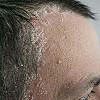Achilles tendonitis
Your Achilles tendon connects your calf muscles to your heel. It is the largest tendon in the body. It is also the strongest, withstanding great force each time you raise your body's weight on your toes, such as when you walk, run, jump, or stand on your toes to reach something. Achilles tendonitis (sometimes spelled tendinitis) is an inflammation of the Achilles tendon.
Without treatment, this condition can become a long-term problem, increasing the chances of breaking (rupturing) the Achilles tendon. Achilles tendonitis is usually caused by overuse. It is common in runners and other athletes. Sometimes it is a sign of a body-wide joint condition such as ankylosing spondylitis.
Wearing poorly fitting shoes, or wearing high heels every day, can also cause Achilles tendonitis.
Diagnosing Achilles tendonitis
Your description of your symptoms and when they occur are often enough for a doctor to diagnose Achilles tendonitis.
During a physical exam, your doctor may ask you to stand on the balls of your feet while he or she observes the flexibility of your heel. Your doctor may also touch your heel and Achilles tendon to see where the inflammation is worst.
Imaging tests usually aren't needed, but may sometimes be used. These include:
- x-ray to show the bones of the foot and leg
- magnetic resonance imaging (MRI) to determine if the tendon has ruptured or has degenerated
- ultrasound to show inflammation and other damage to the area
Symptoms of Achilles tendonitis
The main symptom of Achilles tendonitis is a feeling of pain and swelling in your heel as you walk or run. The pain tends to be most severe just above the back of the heel. At first, it may happen only with running for a long time or sprinting. But as the inflammation gets worse, even climbing stairs can be painful.
Other symptoms may include:
- limited motion when flexing the foot
- tight calf muscles
Treating Achilles tendonitis
Achilles tendonitis should be treated as early as possible. If yours is mild, simple things you can do for yourself are often enough to stop Achilles tendonitis. These include:
- taking a break from the activity that is causing the problem
- stretching your Achilles tendon before you exercise
- icing the tendon after exercising
- using a nonsteroidal anti-inflammatory drug such as ibuprofen or naproxen to ease pain and inflammation
For severe or persistent tendonitis, some athletes wear a splint or cast to immobilize their aching tendons. More aggressive measures include:
- steroid injections
- surgery to repair the Achilles tendon
Prevention
If you run or do other physical activity that stresses the Achilles tendon, there are several things you can do to keep your Achilles tendon from becoming inflamed:
- Stretch your calf muscles every morning
- When exercising, warm up your legs for a few minutes. Then stretch your Achilles tendon by standing with one leg straight, then leaning forward as you keep that heel on the ground. Switch legs.
- Mix up your exercise routine to intersperse activities that put a lot of pressure on your Achilles tendon, like running, with others that don't, like swimming.
- Wear shoes that fit and provide good arch support.
Disclaimer:
As a service to our readers, Harvard Health Publishing provides access to our library of archived content. Please note the date of last review or update on all articles.
No content on this site, regardless of date, should ever be used as a substitute for direct medical advice from your doctor or other qualified clinician.















